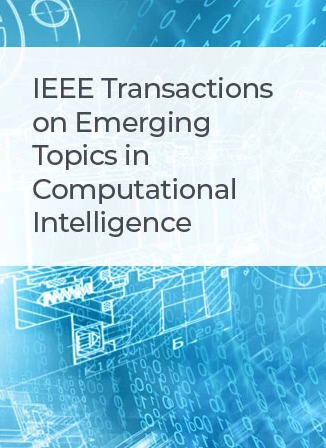Bayesian Inference of Hidden Markov Models Through Probabilistic Boolean Operations in Spiking Neuronal Networks
IF 5.3
3区 计算机科学
Q1 COMPUTER SCIENCE, ARTIFICIAL INTELLIGENCE
IEEE Transactions on Emerging Topics in Computational Intelligence
Pub Date : 2024-12-16
DOI:10.1109/TETCI.2024.3502472
引用次数: 0
Abstract
Recurrent neural networks (RNN) have been extensively used to address the problem of Bayesian inference of a hidden Markov model (HMM). However, such artificial neural architectures are prone to computationally exhaustive training procedures and high energy dissipation. Spiking neural networks (SNNs) are recently explored for performing similar tasks. An interesting problem on Bayesian inference of hidden Markov models (HMM) on SNN paradigm is addressed in this paper. A population based stochastic temporal encoding (PSTE) scheme has been introduced to establish that a spiking neuron behaves as a probabilistic Boolean operator. Using this property the posterior of a hidden state is mapped to probability of firing a logic脉冲神经网络中基于概率布尔运算的隐马尔可夫模型的贝叶斯推断
递归神经网络(RNN)被广泛用于解决隐马尔可夫模型(HMM)的贝叶斯推理问题。然而,这种人工神经结构容易产生计算详尽的训练过程和高能量消耗。尖峰神经网络(snn)最近被用于执行类似的任务。研究了SNN范式下隐马尔可夫模型(HMM)的贝叶斯推理问题。提出了一种基于种群的随机时间编码(PSTE)方案,该方案建立了一个脉冲神经元作为概率布尔算子的行为。利用这一特性,隐藏状态的后验被映射为触发一个逻辑$HIGH$的概率。提出了用随机变量q表示突触强度的两种新算法。第一种算法使用来自预统计分析的s型关系来选择q的值,使得神经元产生逻辑HIGH的概率等于隐藏状态的后验概率。第二种算法考虑数据,通过网络内训练适当地确定$q$。利用PSTE的概念证明了双态hmm和多态hmm的贝叶斯推理都是可行的。给出了两个例子,一个是关于推断时间序列的趋势,另一个是关于解码带有噪声比特的七段LED显示屏的正确数字。我们的框架与传统的贝叶斯推理(准确率差异$<;2\%$)和传统rnn。
本文章由计算机程序翻译,如有差异,请以英文原文为准。
求助全文
约1分钟内获得全文
求助全文
来源期刊

IEEE Transactions on Emerging Topics in Computational Intelligence
Mathematics-Control and Optimization
CiteScore
10.30
自引率
7.50%
发文量
147
期刊介绍:
The IEEE Transactions on Emerging Topics in Computational Intelligence (TETCI) publishes original articles on emerging aspects of computational intelligence, including theory, applications, and surveys.
TETCI is an electronics only publication. TETCI publishes six issues per year.
Authors are encouraged to submit manuscripts in any emerging topic in computational intelligence, especially nature-inspired computing topics not covered by other IEEE Computational Intelligence Society journals. A few such illustrative examples are glial cell networks, computational neuroscience, Brain Computer Interface, ambient intelligence, non-fuzzy computing with words, artificial life, cultural learning, artificial endocrine networks, social reasoning, artificial hormone networks, computational intelligence for the IoT and Smart-X technologies.
 求助内容:
求助内容: 应助结果提醒方式:
应助结果提醒方式:


